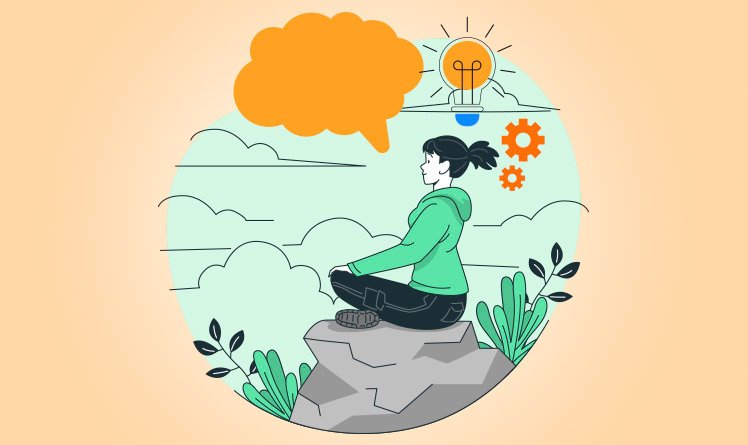Mindfulness and NLP: A transformative combination

|
Getting your Trinity Audio player ready...
|
The quest for a fuller, more meaningful life often leads us to explore practices that promote mental and emotional balance. Two powerful approaches that have gained prominence are Mindfulness and Neuro-Linguistic Programming (NLP).
When combined, these practices become a transformative synergy, offering a journey of self-discovery and personal growth. In this article, we will explore how combining these two practices can be beneficial for personal and professional development.
Introduction to practices mindfulness and NLP
Mindfulness, at its core, is the art of being fully present in the moment, without judgment, cultivating a mindful awareness of the present. On the other hand, Neurolinguistic Programming (NLP) is an approach that seeks to understand human behavior and focuses on the language of the mind to achieve goals and shape the behavior.
The integration of Mindfulness and NLP allows us to experience a holistic approach that harmonizes mindfulness with mental programming, creating a path to personal transformation.
The transformative principles of mindfulness
Mindfulness is based on fundamental principles that transcend the mere practice of meditation. In this sense, full awareness improves the quality of our thoughts, emotions and actions, leading to a more balanced and centered life.
Some of these principles include:
- Mindfulness: paying intentional, non-judgmental attention to the present moment.
- Acceptance: accepting the thoughts and feelings that arise, without judgment or resistance.
- Understanding: the ability to understand the nature of thoughts and feelings without identifying with them.
- Patience: accepting that things take time and that change does not happen overnight.
Cultivating mindfulness involves training our minds to focus on the present and accept what is. This can help us reduce stress, improve concentration and mental clarity, and strengthen our connection to the present, opening up space for inner transformation and increased self-awareness.
Understanding Neuro-Linguistic Programming (NLP)
NLP offers a unique insight into how we perceive the world and communicate internally and externally. It focuses on thought patterns and language to create positive changes in the mind.
NLP teaches us to program our minds to achieve specific goals, using techniques that positively influence our perception and behavior. It is based on the idea that we can learn from people who have achieved success in a certain area and apply these same patterns to our own lives. NLP is used in a variety of contexts, such as coaching, therapy, sales, leadership, and communication.
Developed in the 1970s by Richard Bandler and John Grinder, its approach focuses on three main areas:
- Mind maps: our internal models of the world.
- Disposition: our patterns of communication and behavior.
- Goals: what we want to achieve in life.
In this way, it helps us understand how our mental maps, disposition and goals influence our behavior. Thus, it allows us to make positive changes in our lives, learning to communicate more effectively, overcome challenges and achieve our goals.
Synergy between mindfulness and NLP
The combination of Mindfulness and NLP brings a true synergy, where mindfulness enhances the effectiveness of NLP techniques. By being fully present, we increase our ability to absorb and apply NLP principles. Mindfulness positively impacts our thought processes, making them clearer, more focused and aligned with our goals and values.
Thus, the combination of Mindfulness and NLP can be beneficial for personal and professional development in a number of ways.
Practical techniques for integration mindfulness and NLP
To begin, try meditation mindfulness before applying specific NLP techniques. Combine the mental clarity gained from mindfulness with NLP exercises to set goals and overcome challenges:
- Creative visualization: Imagine yourself achieving your goals and visualize the process of achieving them. Do this during your meditation practice to enhance your visualizations.
- Anchoring: associate a positive emotional state with a specific gesture or word. Use mindfulness when you are reaching the desired emotional state. This will once again enhance the results of applying NLP.
- Mindful Breathing: Practice mindful breathing to calm the mind and reduce stress. stressIn this way, breathing will help to calibrate and apply NLP practices more efficiently, providing a more solid foundation for transformation.
Applications in daily life
The combination of Mindfulness and NLP can be applied in everyday situations to improve work performance, relationships and overall well-being.
At work, we can use mindfulness to improve our concentration and performance, and NLP to set goals and develop new skills. In addition, mindfulness can improve decision-making, while NLP techniques enhance communication skills.
In relationships, we can use mindfulness to increase our understanding of others and improve empathy, while NLP can improve our communication and conflict resolution.
In general well-being, we can use mindfulness to reduce stress and anxiety, and NLP to increase our self-acceptance and confidence by learning to deal with challenging situations.
In both our personal and professional lives, we can use visualization and anchoring to set goals and achieve them, increasing their effectiveness with the use of mindfulness.
The path to personal transformation
Incorporate Mindfulness and NLP in everyday life is a gradual process. Start by integrating small daily practices, such as mindfulness meditation and positive NLP affirmations. Start with a simple technique and gradually increase the challenge as you become more comfortable.
Be patient and consistent, practicing regularly to get the best results. After all, personal transformation takes time and effort. So don’t give up if you don’t see immediate results.
Deepen your knowledge and explore additional resources such as books, courses, workshops and apps to increase your understanding and practice of Mindfulness and NLP.
Find an experienced mentor who can help you learn and grow.
Common challenges and creating routines mindfulness and NLP
During the integration of Mindfulness and NLP, it is common to face challenges such as mental distraction or resistance to change. So approach these challenges with compassion, adjusting your practices as needed.
Set realistic goals and celebrate small victories, gradually building a consistent practice.
Furthermore, incorporating daily routines is essential. Therefore, set aside specific times for mindfulness practices, followed by practical NLP exercises.
Stay consistent, as it is through repetition that these practices become a natural and integral part of your life.
In short…
Adopting the transformative combination of Mindfulness and NLP, allows us to begin a journey of self-discovery, personal growth and achieving a fuller and more meaningful life.
By integrating these practices in a balanced way, you empower yourself to consciously shape your reality and achieve lasting positive results. Experiment, explore, and allow yourself to embark on this journey of personal transformation.
Recommended reading:
Rewire Your Mind: Discover the science and practice of mindfulness (English Edition)
Image: Freepik modified
Article originally published on 12/22/2023 and updated on the date above.

Marcel Castilho is an expert in neuromarketing, neuroscience, mindfulness and positive psychology. In addition to being an advertiser, he also has a Master's degree in NLP – Neurolinguistic Programming. As the owner and founder of the communications agency VeroCom and also of the digital agency Vero Contents, he has been studying human behavior for over 30 years.




